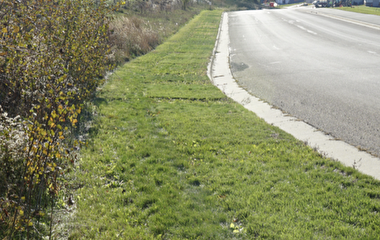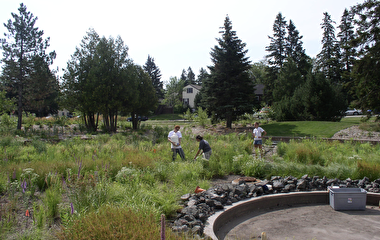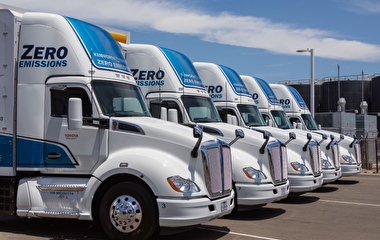Following Susan Handy’s opening presentation at CTS’s 2018 research conference (see related article), a panel of Minnesota leaders and experts took the stage to discuss greenhouse gas reduction from the state and regional perspective, particularly in light of the future landscape surrounding transportation technologies and innovations.
Tim Sexton, Chief Sustainability Officer, Minnesota Department of Transportation
“We’re focused on three main areas. The first is looking internally and trying to increase the sustainability of our own operations, the second is looking at greenhouse gases more broadly within Minnesota’s transportation sector, and the third is working to increase the resilience of our transportation system given projected increases in extreme weather and the risks that poses. We’re doing this now because recent data show climate change is happening faster than we thought and some of the changes are going to be more devastating than we thought, giving us a new sense of urgency.”
James Erkel, Environmental Attorney, formerly with the Minnesota Center for Environmental Advocacy
“Currently, there are challenges and barriers to scaling up electrification and making it viable on a large scale. If we went directly into electrified vehicles right now we would crash the grid, but there will be a long ramp-up, so we have the opportunity to fix and smarten the grid as we go along. We still use a lot of coal to make electricity—changing that mix is important. Overall, the question becomes, What kind of revolutions are we going to have? If we have the first revolution of electrification and the second revolution of autonomous vehicles, but we don’t hit the third shared mobility revolution, it could still be very bad for the grid itself.”
Kjersti Monson, Principal, Chief Executive Officer, and Civic Studio Director, Duval Companies
“There is a regulatory aspect to this as well, and accommodating these new technologies in our regulatory environments and among utilities is at the forefront of the battle. Challenges include the difficulties our regulatory environment has been dealing with on a district-level scale, the hard time fully built-out cities have with adopting these new types of technologies, and the evolving relationship between public and private. We’re moving into a time with the sharing economy where the lines between public and private are getting more blurred and complex.”
Frank Douma, Director, State and Local Policy Program, Humphrey School of Public Affairs
“We’re seeing a new world of interaction between the public and private sectors, leaving the public sector working to determine its role. For example, with ride hailing and car sharing, private companies now have a financial incentive to move the most amount of people at the lowest cost, and that suddenly sounds a lot like what the public sector is trying to do. In addition, we need to think about how, with users paying for each trip, the public sector can collect revenues to pay for the infrastructure these transportation providers are using. Now we pay for infrastructure in various ways, such as the fuel tax and motor vehicle sales tax. With shared mobility, it’s a much different world.”



